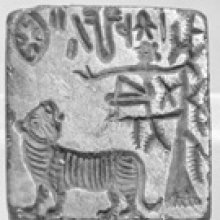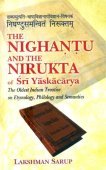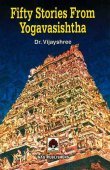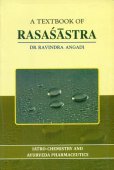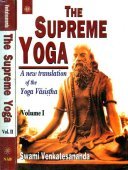Indu, Imdu: 28 definitions
Introduction:
Indu means something in Hinduism, Sanskrit, Jainism, Prakrit, the history of ancient India, Marathi, Hindi, biology. If you want to know the exact meaning, history, etymology or English translation of this term then check out the descriptions on this page. Add your comment or reference to a book if you want to contribute to this summary article.
Images (photo gallery)
In Hinduism
Purana and Itihasa (epic history)
Source: archive.org: Shiva Purana - English TranslationIndu (इन्दु) refers to the “moon”, according to the Śivapurāṇa 2.3.38 (“Description of the dais or maṇḍapa”).—Accordingly, as Himavat prepared the wedding of Menā and Śiva: “[...] Bhṛgu and other sages, secondary gods (upasura), Siddhas and others were represented by Viśvakarman. A wonderful image of Viṣṇu with his attendants, Garuḍa and others was created by him with wonderful features. I too was portrayed as surrounded by my sons, Vedas and Siddhas. O Nārada, I was represented as reciting the hymns. An artificial image of Indra seated on Airāvata and accompanied by his attendants was made by him looking as beautiful as the full moon (paripūrṇa-indu-saṃnibha). [...]”.
Source: Cologne Digital Sanskrit Dictionaries: The Purana Index1a) Indu (इन्दु).—A name of Soma (s.v.).*
- * Brahmāṇḍa-purāṇa II. 19. 134; 37. 44; III. 65. 21; Vāyu-purāṇa 63. 41; Viṣṇu-purāṇa I. 15. 77.
1b) The son of Viśvaga.*
- * Matsya-purāṇa 12. 29.
1c) Moon—married the 27 mānasa daughters of Dakṣa.*
- * Vāyu-purāṇa 63. 41.
Indu (इन्दु) is a name mentioned in the Mahābhārata (cf. I.60.12) and represents one of the many proper names used for people and places. Note: The Mahābhārata (mentioning Indu) is a Sanskrit epic poem consisting of 100,000 ślokas (metrical verses) and is over 2000 years old.

The Purana (पुराण, purāṇas) refers to Sanskrit literature preserving ancient India’s vast cultural history, including historical legends, religious ceremonies, various arts and sciences. The eighteen mahapuranas total over 400,000 shlokas (metrical couplets) and date to at least several centuries BCE.
Ayurveda (science of life)
Source: archive.org: Vagbhata’s Ashtanga Hridaya Samhita (first 5 chapters)1) Indu (इन्दु) is the author of the Śaśilekhā: a commentary on the Aṣṭāṅgahṛdayasaṃhitā: one of the three great works of Vāgbhaṭa.—The Aṣṭāṅgahṛdayasaṃhitā consists only of verses. The eight-fold division is observed in the Aṣṭāṅgahṛdayasaṃhitā too, though not as strictly as in the Aṣṭāṅgasaṃgraha. Numerous commentaries on the Aṣṭāṅgahṛdayasaṃhitā [viz., Indu’s Śaśilekhā], many of them unedited so far, can be traced in manuscripts, catalogues, publishers’ lists, etc.
Tradition makes Indu a pupil of Vāgbhaṭa, and his referring to the author of the Aṣṭāṅgahṛdayasaṃhitā simply as “Master” (Ācārya) seems to point in the same direction. What is more, a contemporary of Vāgbhaṭa by the name of Indu, or rather Indukara, is quite familiar to us; he is the father of Mādhavakara, the renowned author of the Mādhavanidāna, which can hardly have been written later than the 7th century. [...] Judging by the fact that he expressly defines Āndhra and Draviḍa as the names of two southern peoples or kingdoms and repeatedly mentions Kashmirian terms for particular plants, he is likely to have been a Northerner and a native of Kashmir.
Indu also wrote a commentary on the Aṣṭāṅgasaṃgraha, which bears the same title and follows the wording of the former wherever Aṣṭāṅgahṛdayasaṃhitā and Aṣṭāṅgasaṃgraha agree with each other. This work is frequently mentioned as “Indumatī” in Niścalakara’s Ratnaprabhā.
2) Indu (इन्दु) refers to the “moon”, as mentioned in verse 3.30 of the Aṣṭāṅgahṛdayasaṃhitā (Sūtrasthāna) by Vāgbhaṭa.—Accordingly, “[...] One shall eat rice (that is) white like jasmine and the moon [viz., indu], (together) with the meat of game. One shall drink broth (that is) not too thick, rasālā, curds, raga and khāṇḍava syrup, [...]”.

Āyurveda (आयुर्वेद, ayurveda) is a branch of Indian science dealing with medicine, herbalism, taxology, anatomy, surgery, alchemy and related topics. Traditional practice of Āyurveda in ancient India dates back to at least the first millenium BC. Literature is commonly written in Sanskrit using various poetic metres.
Jyotisha (astronomy and astrology)
Source: Wisdom Library: Brihat Samhita by VarahamihiraIndu (इन्दु) refers to the “moon (candra)”, according to the Bṛhatsaṃhitā (chapter 4), an encyclopedic Sanskrit work written by Varāhamihira mainly focusing on the science of ancient Indian astronomy astronomy (Jyotiṣa).—Accordingly, “The moon (candra) [i.e., indu] is always below (nearer to the Earth than) the sun. It is spherical in shape. One half of it is always illumined by the light of the sun, while the other half is dark owing to its own shadow, just like a pot placed in the sun. The rays of the sun falling on the watery moon remove the darkness of the night (on Earth) just in the same way as light reflected from a mirror (placed in the sun) removes the darkness (from) within a room”.

Jyotisha (ज्योतिष, jyotiṣa or jyotish) refers to ‘astronomy’ or “Vedic astrology” and represents the fifth of the six Vedangas (additional sciences to be studied along with the Vedas). Jyotisha concerns itself with the study and prediction of the movements of celestial bodies, in order to calculate the auspicious time for rituals and ceremonies.
Shaivism (Shaiva philosophy)
Source: Google Books: Manthanabhairavatantram (shaivism)Indu (इन्दु) refers to “(white like the) moon”, according to the Śrīmatottara-tantra, an expansion of the Kubjikāmatatantra: the earliest popular and most authoritative Tantra of the Kubjikā cult. Accordingly, “O goddess, Svacchanda is in the middle, within the abode of the triangle. Very powerful, he has five faces with three times five flaming eyes. [...] Īśāna is the upper face. Both supreme and inferior, its nature is creation. (White) like snow, jasmine and the moon [i.e., hima-kunda-indu-saṃkāśa], it is stainless like pure crystal. It nourishes the entire universe with its moon rays as it rains in a great torrent a stream of nectar-like (bliss). Contemplating Īśāna (in this way) one attains (all eight) yogic powers. [...]”.
Source: SOAS University of London: Protective Rites in the Netra TantraIndu (इन्दु) refers to a “drop (of cow’s milk)”, according to the Netratantra of Kṣemarāja: a Śaiva text from the 9th century in which Śiva (Bhairava) teaches Pārvatī topics such as metaphysics, cosmology, and soteriology.—Accordingly, [verse 3.17-23, while describing a meditation on Amṛteśa in his form as Mṛtyujit]—“And so now, having constructed the amṛtāmudrā or the padmamudrā, [the mantrin] should meditate on the Ātman. The deity is equal in splendor [to that] of ten million moons, as bright as pellucid pearls, and as magnificent as quartz stone, he resembles drop of cow’s milk (kunda-indu-gokṣīra-nibha) or jasmine, mountain snow, and is everywhere. [...]”.

Shaiva (शैव, śaiva) or Shaivism (śaivism) represents a tradition of Hinduism worshiping Shiva as the supreme being. Closely related to Shaktism, Shaiva literature includes a range of scriptures, including Tantras, while the root of this tradition may be traced back to the ancient Vedas.
Ganitashastra (Mathematics and Algebra)
Source: archive.org: Hindu MathematicsIndu (इन्दु) represents the number 1 (one) in the “word-numeral system” (bhūtasaṃkhyā), which was used in Sanskrit texts dealing with astronomy, mathematics, metrics, as well as in the dates of inscriptions and manuscripts in ancient Indian literature.—A system of expressing numbers by means of words arranged as in the place-value notation was developed and perfected in India in the early centuries of the Christian era. In this system the numerals [e.g., 1—indu] are expressed by names of things, beings or concepts, which, naturally or in accordance with the teaching of the Śāstras, connote numbers.

Ganitashastra (शिल्पशास्त्र, gaṇitaśāstra) refers to the ancient Indian science of mathematics, algebra, number theory, arithmetic, etc. Closely allied with astronomy, both were commonly taught and studied in universities, even since the 1st millennium BCE. Ganita-shastra also includes ritualistic math-books such as the Shulba-sutras.
Vastushastra (architecture)
Source: Shodhganga: Elements of Art and Architecture in the Trtiyakhanda of the Visnudharmottarapurana (vastu)Indu (इन्दु) refers to one of the hundred types of Temples (in ancient Indian architecture), according to the Viṣṇudharmottarapurāṇa, an ancient Sanskrit text which (being encyclopedic in nature) deals with a variety of cultural topics such as arts, architecture, music, grammar and astronomy.—It is quite difficult to say about a definite number of varieties of Hindu temples but in the Viṣṇudharmottarapurāṇa hundred varieties of temples have been enumerated. For example, Indu. These temples are classified according to the particular shape, amount of storeys and other common elements, such as the number of pavilions, doors and roofs.

Vastushastra (वास्तुशास्त्र, vāstuśāstra) refers to the ancient Indian science (shastra) of architecture (vastu), dealing with topics such architecture, sculpture, town-building, fort building and various other constructions. Vastu also deals with the philosophy of the architectural relation with the cosmic universe.
In Jainism
General definition (in Jainism)
Source: The University of Sydney: A study of the Twelve ReflectionsIndu (इन्दु) refers to the “moon”, according to the 11th century Jñānārṇava, a treatise on Jain Yoga in roughly 2200 Sanskrit verses composed by Śubhacandra.—Accordingly, “The rain clouds, wind, sun (arka), moon (indu), earth, ocean and Indra—those, which are protected by the doctrine, are of service to the whole world. I think, that doctrine, whose progress is unimpeded, has arisen for the benefit of the world of living souls in the guise of world-protectors”.

Jainism is an Indian religion of Dharma whose doctrine revolves around harmlessness (ahimsa) towards every living being. The two major branches (Digambara and Svetambara) of Jainism stimulate self-control (or, shramana, ‘self-reliance’) and spiritual development through a path of peace for the soul to progess to the ultimate goal.
India history and geography
Source: Cologne Digital Sanskrit Dictionaries: Indian Epigraphical GlossaryIndu.—(IE 7-12), ‘one’. Note: indu is defined in the “Indian epigraphical glossary” as it can be found on ancient inscriptions commonly written in Sanskrit, Prakrit or Dravidian languages.

The history of India traces the identification of countries, villages, towns and other regions of India, as well as mythology, zoology, royal dynasties, rulers, tribes, local festivities and traditions and regional languages. Ancient India enjoyed religious freedom and encourages the path of Dharma, a concept common to Buddhism, Hinduism, and Jainism.
Biology (plants and animals)
Source: Wisdom Library: Local Names of Plants and DrugsIndu [ಈಂದು] in the Kannada language is the name of a plant identified with Corypha umbraculifera L. from the Arecaceae (Palm) family. For the possible medicinal usage of indu, you can check this page for potential sources and references, although be aware that any some or none of the side-effects may not be mentioned here, wether they be harmful or beneficial to health.
Source: Google Books: CRC World Dictionary (Regional names)1) Indu in India is the name of a plant defined with Acacia caesia in various botanical sources. This page contains potential references in Ayurveda, modern medicine, and other folk traditions or local practices It has the synonym Mimosa intsia auct. non L. (among others).
2) Indu is also identified with Caesalpinia decapetala It has the synonym Mezonevron benguetense Elmer (etc.).
3) Indu is also identified with Caryota urens It has the synonym Caryota urens Blanco (etc.).
4) Indu is also identified with Cinnamomum camphora It has the synonym Cinnamomum camphoroides Hayata (etc.).
5) Indu is also identified with Corypha umbraculifera It has the synonym Bessia sanguinolenta Raf. (etc.).
6) Indu is also identified with Mimosa rubicaulis It has the synonym Mimosa intsia sensu auct. non L. (etc.).
7) Indu is also identified with Phoenix pusilla It has the synonym Zelonops pusilla (Gaertn.) Raf. (etc.).
Example references for further research on medicinal uses or toxicity (see latin names for full list):
· Hort. Bot. Panorm. (1876)
· Deutsche Flora. Pharmaceutisch-medicinische Botanik (1881)
· A Numerical List of Dried Specimens (5264)
· Abh. Math.-Phys. Cl. Konigl. Bayer. Akad. Wiss. (1845)
· Verhandelingen van het Bataviaasch Genootschap van Kunsten en Wetenschappen (1830)
· Plant Systematics and Evolution (1994)
If you are looking for specific details regarding Indu, for example diet and recipes, pregnancy safety, chemical composition, health benefits, extract dosage, side effects, have a look at these references.

This sections includes definitions from the five kingdoms of living things: Animals, Plants, Fungi, Protists and Monera. It will include both the official binomial nomenclature (scientific names usually in Latin) as well as regional spellings and variants.
Languages of India and abroad
Marathi-English dictionary
Source: DDSA: The Molesworth Marathi and English Dictionaryindu (इंदु).—m S The moon. induvāra or induvāsara m S Monday.
Source: DDSA: The Aryabhusan school dictionary, Marathi-Englishindu (इंदु).—m The moon. induvāra-vāsara m Monday.
Marathi is an Indo-European language having over 70 million native speakers people in (predominantly) Maharashtra India. Marathi, like many other Indo-Aryan languages, evolved from early forms of Prakrit, which itself is a subset of Sanskrit, one of the most ancient languages of the world.
Sanskrit dictionary
Source: DDSA: The practical Sanskrit-English dictionaryIndu (इन्दु).—[unatti kledayati candrikayā bhuvanaṃ und-u ādericca Uṇādi-sūtra 1.12]
1) The moon; दिलीप इति राजेन्दुरिन्दुः क्षीरनिधाविव (dilīpa iti rājendurinduḥ kṣīranidhāviva) R.1.12 (indu is said to mean in the Veda a drop of Soma juice, a bright drop or spark; sutāsa indavaḥ Ṛgveda 1.16.6).
2) The मृगशिरस् (mṛgaśiras) Nakṣatra.
3) (in Math.) The number 'one'.
4) Camphor.
5) The point on a die; तेभ्यो व इन्दवो हविषा विधेम (tebhyo va indavo haviṣā vidhema) Av.7.19.6.
6) Designation of the अनुस्वार (anusvāra). (pl.)
1) The periodical changes of the moon.
2) The time of moon-light, night.
Derivable forms: induḥ (इन्दुः).
Source: Cologne Digital Sanskrit Dictionaries: Shabda-Sagara Sanskrit-English DictionaryIndu (इन्दु).—m.
(-nduḥ) 1. The moon. 2. Camphor. E. und to wet or moisten; u Unadi affix and the initial changed to i.
Source: Cologne Digital Sanskrit Dictionaries: Benfey Sanskrit-English DictionaryIndu (इन्दु).—m. The moon, [Rāmāyaṇa] 3, 50, 12.
Source: Cologne Digital Sanskrit Dictionaries: Cappeller Sanskrit-English DictionaryIndu (इन्दु).—[masculine] a drop, [especially] of Soma; the drop or spark in the sky, i.e. the moon.
Source: Cologne Digital Sanskrit Dictionaries: Aufrecht Catalogus Catalogorum1) Indu (इन्दु) as mentioned in Aufrecht’s Catalogus Catalogorum:—a writer on botany. Quoted by Kṣīrasvāmin on Amarakośa.
2) Indu (इन्दु):—a grammarian. Quoted in Mādhavīyadhātuvṛtti. See Indumitra.
Source: Cologne Digital Sanskrit Dictionaries: Monier-Williams Sanskrit-English Dictionary1) Indu (इन्दु):—m. (√und, [Uṇādi-sūtra i, 13]; probably [from] ind = √und, ‘to drop’ [see p. 165, col. 3, and cf. indra]; perhaps connected with bindu, which last is unknown in the Ṛg-veda, [Boehtlingk & Roth’s Sanskrit-Woerterbuch]), [Vedic or Veda] a drop (especially of Soma), Soma, [Ṛg-veda; Atharva-veda; Vājasaneyi-saṃhitā]
2) a bright drop, a spark, [Taittirīya-saṃhitā]
3) the moon
4) m. [plural] (avas) the moons id est. the periodic changes of the moon
5) time of moonlight, night, [Ṛg-veda; Mahābhārata; Śakuntalā; Meghadūta] etc.
6) camphor, [Bhāvaprakāśa]
7) the point on a die, [Atharva-veda vii, 109, 6]
8) Name of Vāstoṣpati, [Ṛg-veda vii, 54, 2]
9) a symbolic expression for the number ‘one’
10) designation of the Anusvāra
11) a coin, [cf. Lexicographers, esp. such as amarasiṃha, halāyudha, hemacandra, etc.] (In the Brāhmaṇas, indu is used only for the moon; but the connexion between the meanings ‘Soma juice’ and ‘moon’ in the word indu has led to the same two ideas being transferred in classical Sanskṛt to the word soma, although the latter has properly only the sense ‘Soma juice.’)
12) the weight of a silver Pala, [cf. Lexicographers, esp. such as amarasiṃha, halāyudha, hemacandra, etc.]
Source: Cologne Digital Sanskrit Dictionaries: Yates Sanskrit-English DictionaryIndu (इन्दु):—(nduḥ) 2. m. The moon.
Source: DDSA: Paia-sadda-mahannavo; a comprehensive Prakrit Hindi dictionary (S)Indu (इन्दु) in the Sanskrit language is related to the Prakrit word: Iṃdu.
[Sanskrit to German]
Sanskrit, also spelled संस्कृतम् (saṃskṛtam), is an ancient language of India commonly seen as the grandmother of the Indo-European language family (even English!). Closely allied with Prakrit and Pali, Sanskrit is more exhaustive in both grammar and terms and has the most extensive collection of literature in the world, greatly surpassing its sister-languages Greek and Latin.
Hindi dictionary
Source: DDSA: A practical Hindi-English dictionaryIndu in Hindi refers in English to:—(nm) see '[camdrama]'..—indu (इंदु) is alternatively transliterated as Iṃdu.
...
Prakrit-English dictionary
Source: DDSA: Paia-sadda-mahannavo; a comprehensive Prakrit Hindi dictionaryIṃdu (इंदु) in the Prakrit language is related to the Sanskrit word: Indu.
Prakrit is an ancient language closely associated with both Pali and Sanskrit. Jain literature is often composed in this language or sub-dialects, such as the Agamas and their commentaries which are written in Ardhamagadhi and Maharashtri Prakrit. The earliest extant texts can be dated to as early as the 4th century BCE although core portions might be older.
Kannada-English dictionary
Source: Alar: Kannada-English corpusIṃḍu (ಇಂಡು):—[verb] to call or cry aloud; to shout.
--- OR ---
Iṃḍu (ಇಂಡು):—[noun] = ಇಂಡೆ [imde]1.
--- OR ---
Iṃdu (ಇಂದು):—
1) [noun] the present day; to-day.
2) [noun] the present time or period.
3) [noun] ಇಂದುತನಕ [imdutanaka] indutanaka till to-day; 2. till recently or present time; ಇಂದುಮೊದಲ್ [imdumodal] indu modal from to-day onwards; henceforth; ಇಂದುವರಂ [imduvaram] induvaram = ಇಂದುತನಕ [imdutanaka]; ಇಂದುವರೆ [imduvare] induvare = ಇಂದುತನಕ [imdutanaka].
--- OR ---
Iṃdu (ಇಂದು):—
1) [adverb] on this day.
2) [adverb] in the present time; now-a-days.
--- OR ---
Iṃdu (ಇಂದು):—[noun] the river in South Asia, rising in South West Tibet and flowing west across Jammu and Kashmir, India, then southwest through Pakistan into the Arabian Sea; the Sindhu river.
--- OR ---
Iṃdu (ಇಂದು):—
1) [noun] the moon.
2) [noun] (math.) a symbol for the number one.
3) [noun] (pros.) a metrical foot consisting of one long syllabic instant followed by two short ones (-uu); dactylus.
--- OR ---
Iṃdu (ಇಂದು):—[noun] the tree Corypha umbraculifera of Aracaceae family; umbrella palm.
--- OR ---
Īṃdu (ಈಂದು):—[noun] the palm tree, Phoenix sylvestris ( = Elate sylvestris) of Arecaceae family; toddy palm.
Kannada is a Dravidian language (as opposed to the Indo-European language family) mainly spoken in the southwestern region of India.
See also (Relevant definitions)
Starts with (+122): Imducuda, Imdudhara, Imdudidhiti, Imdudyuti, Imdughamtarava, Imduhasa, Imdujuta, Imdukale, Imdukamtopala, Imdulamchana, Imdulekhacuda, Imdulekhe, Imdupala, Imduppu, Imdurekhe, Imduroci, Imduruci, Imduti, Imduttaravadimsaga, Imtu.
Ends with (+267): Abalendu, Abbindu, Abimdu, Abvindu, Adhobindu, Adhyatmabindu, Agnibindu, Agnivindu, Ajabindu, Ajavindu, Akanabindu, Amcevimdu, Amdhabimdu, Amritabindu, Amritavindu, Anandabindu, Andhbindu, Ankindu, Aradivimdu, Aragilivimdu.
Full-text (+396): Sindhu, Saindhava, Induratna, Indulohaka, Indukamala, Indubhrit, Sindhunada, Indumani, Induvalli, Induvrata, Indujanaka, Indushekhara, Krumu, Indukala, Imdu, Upasindhu, Indurekha, Paresindhu, Lohaka, Induvadana.
Relevant text
Search found 129 books and stories containing Indu, Imdu, Iṃdu, Iṃḍu, Īṃdu, Iṇḍu, Īndu; (plurals include: Indus, Imdus, Iṃdus, Iṃḍus, Īṃdus, Iṇḍus, Īndus). You can also click to the full overview containing English textual excerpts. Below are direct links for the most relevant articles:
Rig Veda (translation and commentary) (by H. H. Wilson)
Bhakti-rasamrta-sindhu (by Śrīla Rūpa Gosvāmī)
Verse 4.8.72 < [Part 8 - Compatible & Incompatible Mellows (maitrī-vaira-sthiti)]
Verse 3.4.15 < [Part 4 - Parenthood (vātsalya-rasa)]
Verse 2.3.49 < [Part 3 - Involuntary Ecstatic Expressions (sattvika-bhāva)]
Brihad Bhagavatamrita (commentary) (by Śrī Śrīmad Bhaktivedānta Nārāyana Gosvāmī Mahārāja)
Verse 2.4.68 < [Chapter 4 - Vaikuṇṭha (the spiritual world)]
Verse 2.1.144 < [Chapter 1 - Vairāgya (renunciation)]
Verse 2.4.142-144 < [Chapter 4 - Vaikuṇṭha (the spiritual world)]
Emergence of the New Indian Women: Shashi < [April – June, 2006]
The Religion of the World < [April – June, 1993]
Martial Dissonance in R. P. Jhabvala’s The < [July – September, 2007]
Sahitya-kaumudi by Baladeva Vidyabhushana (by Gaurapada Dāsa)
Text 10.67 < [Chapter 10 - Ornaments of Meaning]
Text 10.69 < [Chapter 10 - Ornaments of Meaning]
Text 9.16 < [Chapter 9 - Ornaments of Sound]
Garga Samhita (English) (by Danavir Goswami)
Verse 2.9.11 < [Chapter 9 - Brahmā’s Prayers]
Verse 1.2.38 < [Chapter 2 - Description of the Abode of Śrī Goloka]
Verse 2.21.19 < [Chapter 21 - The Rāsa-dance Pastime]
Related products
(+3 more products available)
